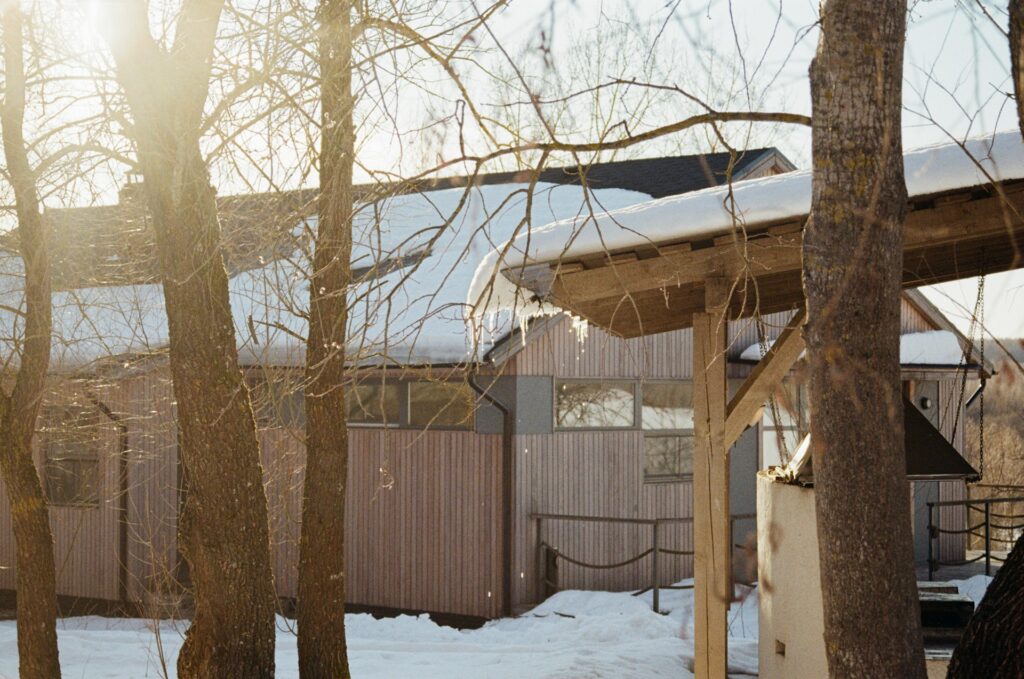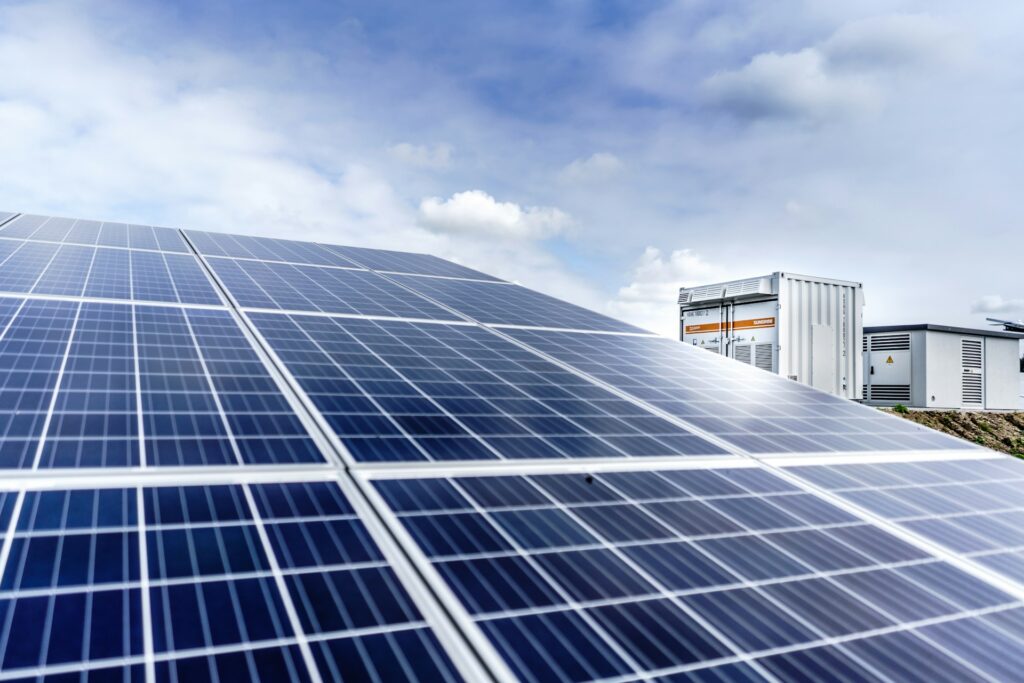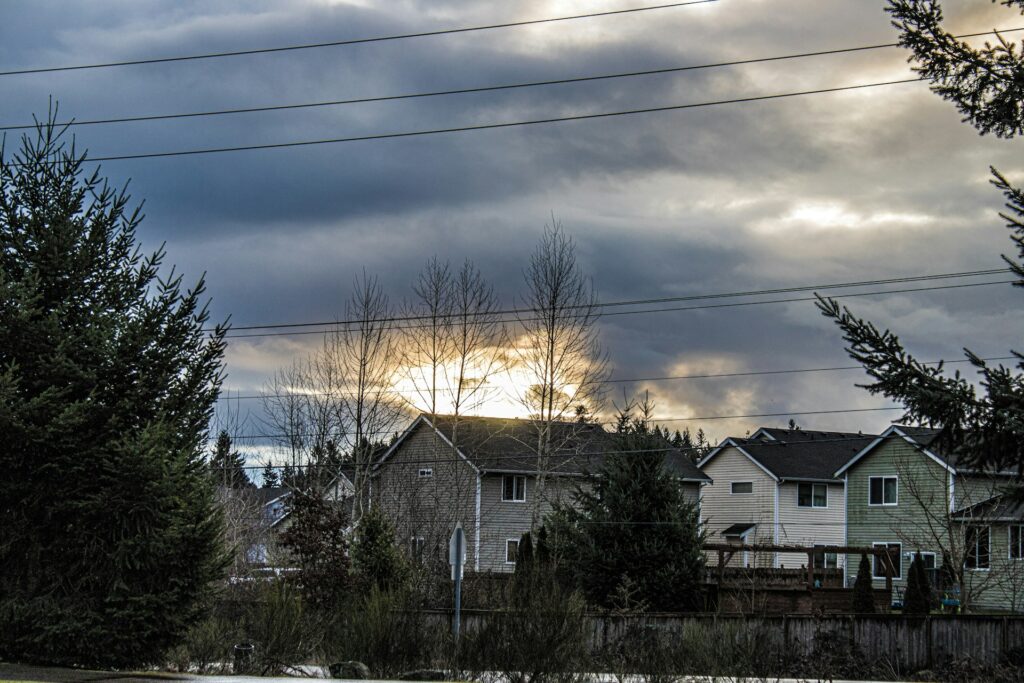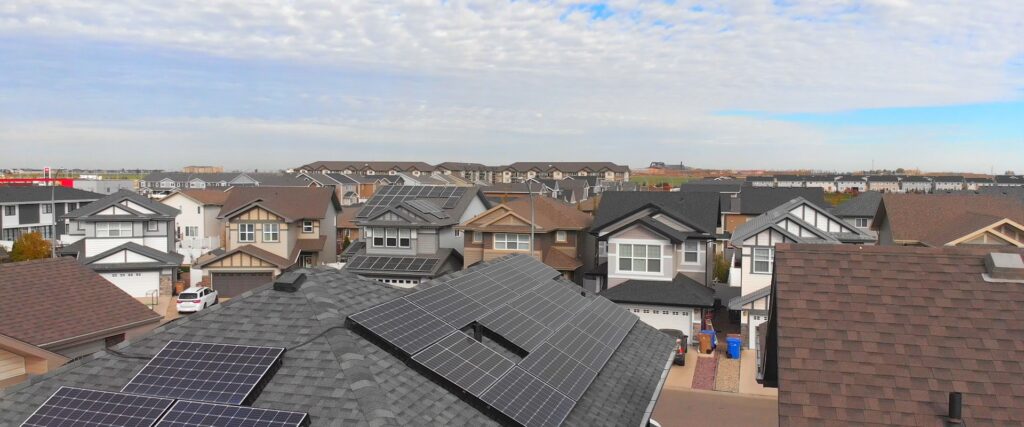To run an air conditioner with solar panels, you usually need to generate 1.5 to 5.0 kilowatts (kW) of energy, depending on the AC unit’s size (1 to 5 tons) and efficiency. For a standard 1.5-ton AC, you may usually require 6 to 8 solar panels (350W–400W each), assuming 5 peak solar hours consistent per day. The exact number is decided by your AC’s wattage and your area’s sunlight availability.
Air conditioning is one of the biggest energy drains in a modern home, especially during the summer months. For homeowners committed to sustainability and decreasing electricity bills, a common and important question arises: How many solar panels are needed to run an air conditioner effectively?
The shift toward solar-powered cooling is a practical method to combat growing energy costs and reduce your carbon footprint. However, calculating the precise number of panels needed requires more than a simple guess. It involves knowing the energy demands of your AC, the productivity of your solar panels, and the unique climate of your area.
This complete guide breaks down the important factors, key terminologies, and practical calculations that will help you confidently decide the solar setup required for your AC unit.
How Many Solar Panels Do You Need to Run an Air Conditioner?
The primary requirement for powering your AC on solar energy is knowing the AC unit’s particular electricity use. You need to calculate the daily power (in kilowatt-hours, or kWh) the air conditioner consumes before you can match it with the energy the solar panels can produce.
The general rule of thumb for determining the minimum capacity of your solar system is to use the following calculation, which helps determine the peak power required to run the unit:
AC Wattage ÷ Solar Panel Wattage = Number of Panels
However, this simple system is just a place to begin, as it calculates instant power (running at the same time), not daily electricity needs (running over several hours).
To accurately determine your solar system size, you need to understand the two key measurements related to your AC unit:
-
Watts (Power Used):
This is the electricity the unit consumes when running. Watts determine the minimum size of the solar system and inverter needed.
-
BTUs (Cooling Capacity):
British Thermal Units per hour (BTU/h) measure the unit’s potential to cool a space. AC units are often sized in “tons,” where 1 ton equals 12,000 BTU/h.
The most important thing is that the BTU (or tonnage) tells you how big of a room your AC can cool, and that size is directly related to how much power your solar panels will need.
The intention is simple: To run an AC with solar, the panels should generate sufficient daily power (kWh) to cover the AC’s total daily energy intake (kWh) while also taking into consideration the system losses.
Solar Panel Basics: Key Terms You Need to Know
Before diving into precise calculations for how many solar panels to power an air conditioner, it’s crucial to understand the basic concepts that govern solar electricity production.
Peak Sun Hours
“Peak Sun Hours” (PSH) is a standard solar industry dimension used to determine the average amount of high-intensity sunlight your area receives every day.
Definition:
One peak sun hour is defined as one hour of sunlight that gives 1,000 watts of solar energy per square meter.
Why it Matters:
This figure is important for sizing the system since it makes the amount of sunlight more consistent. A panel can get light for 12 hours, but only 4 to 7 of those hours will be at their strongest. If your area gets a lot of peak sun hours, you won’t need as many panels to meet a certain energy need.
| Region/Location | Average Daily Peak Sun Hours (PSH) |
| Southwest US (Arizona, New Mexico) | $6.0 – 7.5$ hours |
| California / Florida | $5.0 – 6.0$ hours |
| Continental US Average | $4.5 – 5.5$ hours |
| Northeast US | $3.0 – 4.0$ hours |
Solar Panel Efficiency Explained
Solar panel efficiency refers to the proportion of sunlight hitting the panel’s floor that is converted into usable energy.
Definition:
Efficiency is the ratio of electrical energy output to solar electricity input.
- Standard Efficiency Range:
Most modern residential solar panels (monocrystalline) have performance rates between 19% and 22%. High-end panels can reach 24% or more.
- The Impact:
A panel with a higher efficiency rating can make more power from the same amount of sunlight and take up less space on the roof. A 400W panel with 22% efficiency, for instance, is smaller than a 400W panel with 19% efficiency.
- Conclusion:
When there isn’t much room on the roof, people frequently utilize higher-efficiency panels. This lets you install fewer panels and still get enough electricity to run your AC.
Factors Affecting Solar Panel Requirements
The actual calculation for how many solar panels to run AC is completely individualized. It relies upon four key factors that immediately affect energy demand and production capacity.
AC Unit Size & Wattage
The biggest factor is the dimensions and performance of your air conditioner. The cooling capacity (tonnage) directly determines the electricity (wattage) it uses.
| AC Unit Size | Tonnage (Approx.) | Typical Running Wattage (Modern High-Efficiency) | Daily kWh (8 Hrs Usage) |
| Small Window Unit | $0.5 – 0.8$ ton | $500\text{W} – 800\text{W}$ | $4.0\text{ kWh} – 6.4\text{ kWh}$ |
| Single-Zone Mini-Split | $1.0$ ton | $800\text{W} – 1,200\text{W}$ | $6.4\text{ kWh} – 9.6\text{ kWh}$ |
| Medium Home (Split/Central) | $1.5$ ton | $1,200\text{W} – 1,800\text{W}$ | $9.6\text{ kWh} – 14.4\text{ kWh}$ |
| Large Home (Central AC) | $3.0$ ton | $2,500\text{W} – 3,500\text{W}$ | $20\text{ kWh} – 28\text{ kWh}$ |
| Very Large Home (Central AC) | $5.0$ ton | $3,500\text{W} – 5,000\text{W}$ | $28\text{ kWh} – 40\text{ kWh}$ |
Note on Start-up Wattage: When AC compressors turn on, they need a lot of power at first (often 2–3 times the running watts). This doesn’t change the total amount of electricity (kWh) you need every day, but it does change the size of the inverter you need to put in.
Sunlight Availability
As discussed above, your geographic area and local climate (cloud cover, fog, and seasonal variations) drastically impact how much electricity your panels can produce. A home in Arizona will need fewer panels than the same home in Seattle to generate the same amount of energy.
Battery Storage & Inverter Efficiency
If you want to cool your home at night, or if you plan to head absolutely off-grid, you will definitely need a battery bank to store the excess solar electricity generated during the day.
-
Inverter Losses:
Solar power is generated as Direct Current (DC) and should be converted to Alternating Current (AC) for household use. This conversion system involves some energy loss. Modern inverters are quite efficient, typically working at 95% to 98% efficiency.
-
System Losses:
Solar installers take into account an overall system derate of between 15% to 25% when figuring out how big your panels have to be. This is to make up for losses from wiring, heat, dust, and inverter conversion.
-
Hybrid Systems:
Most residential AC solar systems are grid-tied. This means that if the panels don’t produce sufficient power (e.g., on a cloudy day), the home automatically pulls the main electricity from the utility grid. If the panels produce too much electricity, the excess is fed back to the grid for credits (Net Metering).
Practical Considerations Before Installing Solar Panels
A solar installation is a complicated task. It’s important to figure out how many panels you need, but there are a lot of physical and technological issues that need to be worked out before you sign a contract.
-
Roof Orientation and Tilt Angle:
The perfect orientation for optimum annual electricity production is South-facing (in the Northern Hemisphere). The best tilt angle usually matches the house’s latitude. Deviations from this ideal means decreased power production and a need for more panels.
-
Shading from Trees/Buildings:
Even partial shading on a single panel can substantially lessen the output of a whole string of panels. An expert evaluation will find and fix any shading troubles, often by using micro-inverters or power optimizers.
-
Panel Placement:
- Rooftop:
This is the most frequent and cost-effective option, although it is restricted by the amount of unshaded roof space that is available.
-
Ground-Mounted:
This type of installation is usually more expensive, but it lets you get the correct orientation and tilt, which leads to increased energy output overall.
-
Maintenance Requirements:
Solar panels require minimal maintenance, but regular protection (cleaning, inspections) is important. Keeping panels clean from dust and dirt guarantees they’re constantly operating at the efficiency used in your initial calculations.
Example: How Many Solar Panels Do You Need for AC?
Here is a sensible breakdown of the anticipated solar panel requirements for different AC unit sizes, assuming a notably sunny area (5 PSH/day) and the use of modern 400W solar panels.
Case 1: Small Window AC
- Wattage: 600textW (Average for a small unit).
- Usage: 5 hours/day.
- Daily Energy Required: 0.6 kW x 5 hours = 3.0 kWh.
- Panel Daily Production Estimate: 400 W panel x 5 PSH x 0.77(Derate) = 1.54 kWh/day.
- Panels Needed (Daily Energy): 3.0 kWh ÷ 1.54 kWh/panel approx 1.95 panels.
- Panels Needed: 2–3 panels. (Rounding up to 3 provided a buffer).
Case 2: 1.5-Ton Mini-Split or Kitchen AC
- Wattage: 1,500W (Average for an efficient 1.5 ton unit).
- Usage: 8 hours/day.
- Daily Energy Required: 1.5 kW x 8 hours = 12.0 kWh.
- Panel Daily Production Estimate: 1.54 kWh/day per 400W panel (same as above).
- Panels Needed (Daily Energy): 12.0 kWh ÷ 1.54 kWh/panel approx 7.8 panels.
- Panels needed: 8 panels. (This aligns with the general rule of thumb of 6–8 panels for a 1.5-ton AC).
Case 3: Central AC Unit
- Wattage: 3,500 W (Average for an efficient 3-ton unit).
- Usage: 8 hours/day.
- Daily Energy Required: 3.5 kW x 8 hours = 28.0 kWh.
- Panel Daily Production Estimate: 1.54 kWh/day per 400W panel.
- Panels Needed (Daily Energy): 28.0 kWh ÷ 1.54 kWh/panel approx 18.2 panels.
- Panels Needed: 18–20 panels. (This needs a significant system, often a complete-home array).
Costs of Running AC on Solar Power
The initial cost of installing a solar system to specifically cover your AC use is a prime consideration, but it is crucial to view it as a long-term investment.
-
Installation Costs (Panels, Inverter, Battery):
The size of the system is the only thing that affects the pricing. A tiny 2–3 panel arrangement to run a window AC might cost a few thousand dollars. A big 8 kW system (18–20 panels) to run central AC, on the other hand, will cost a lot more, often tens of thousands of dollars. The most expensive part is the battery storage, which can easily add $10,000 to $20,000 to the whole cost.
-
Government Incentives & Tax Credits:
Significant federal tax credits (just like the Investment Tax Credit within the US) and various country/local incentives can reduce the cost of the device by up to 30% or more.
-
Long-Term Electricity Savings:
Running your AC—the single most power-eating appliance—on free, self-generated power leads to immediate and significant monthly financial savings for your utility bill, particularly in hot climates.
-
ROI Timeline (Break-Even Period):
The payback period, or the time it takes for your electricity savings to cover the installation fee, normally ranges from 5 to 10 years, depending heavily on the cost of power for your place and the incentives you obtain.
Environmental Benefits of Solar-Powered AC
There are definite environmental benefits to using solar energy to power your cooling system, in addition to the financial ones:
-
Reduced Carbon Footprint:
By the use of sun-generated energy, you directly lessen the demand on the grid, which often relies on fossil fuels (coal and natural gas) to meet top summer demand.
-
Sustainable Cooling During Heat Waves:
Solar power generation is highest when AC usage is maximum on hot, sunny days. This creates a highly sustainable and local energy source for the most important appliance during extreme weather.
-
Less Dependence on Fossil-Fuel-Powered Grids:
Solar AC contributes to power independence and grid stability by decreasing peak-hour electricity intake, easing the strain on utility companies.
Conclusion
Determining how many solar panels to run an air conditioner calls for a detailed evaluation of your AC’s wattage, your weather’s peak sun hours, and your particular cooling behavior. The feasibility of running your AC on solar electricity depends on the size of the unit, your geographical location, and whether you choose battery backup.
However, for high-energy AC users, the shift is certainly worth the investment. It saves you a lot of money right away, makes you less dependent on energy, and is a big step toward living a more environmentally friendly and sustainable life. By calculating your exact needs, you can transform your highest energy expense into a source of free, clean energy.
Ready to calculate how many solar panels you need to run your AC? Contact us at RAR Energy and get a free solar consultation today to start cooling your house sustainably.
FAQ
Q: Can I run an AC on solar without batteries?
Yes, absolutely. With a grid-tied setup, you can run an air conditioner on solar power without batteries. During the day, the panels make enough power to run the AC, and any extra power goes back to the grid. The system will automatically get the extra electricity it needs from the utility grid if the panels aren’t making enough.
Q: How many panels for a 1.5-ton AC?
For a standard, modern, high-efficiency 1.5-ton AC unit, you usually need 6 to 8 solar panels (350W–400W each). This range ensures the array generates sufficient general daily strength (around 12text kWh) to run the unit for about eight hours, depending on your local sunlight conditions.
Q: Can solar panels run central AC?
Yes, solar panels can run central AC; however, it needs a considerably larger system. Depending on the dimensions of your central unit (3 to 5 tons) and usage, you need to consider installing 15 to 25 or more panels. This often turns into a part of a larger, complete residential solar system designed to cover all energy needs.
Q: Is it really worth the investment to run AC on solar?
It’s quite useful for people who live in hot areas and use their air conditioning a lot. Using free solar energy to run the device that uses the most electricity saves you money. Also, solar systems that work well raise the value of your home and protect you from rising electricity rates.





